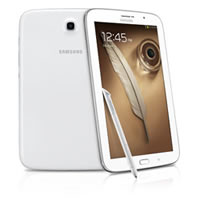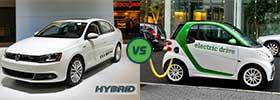Difference between Samsung Galaxy Note 8.0 and Nexus 10
Key difference: The Samsung Galaxy Note 8.0 aims at filling the gap between the Galaxy Note II and the Galaxy Note 10.1. The Galaxy Note 8 features an 8 inch TFT capacitive touchscreen with a resolution of 800 x 1280 pixels. The device is powered by a Quad-core 1.6 GHz Cortex-A9 and 2 GB of RAM. The device runs on Android OS, v4.1.2 (Jelly Bean). The Nexus 10 is a tablet computer running Android 4.2 (also named Jelly Bean) operating system, which was released with it. It was developed in collaboration with Samsung. The Nexus 10 features a Samsung Exynos 5250 system on chip, a dual-core 1.7 GHz Cortex A15 central processing unit and a quad-core ARM Mali T604 graphics processing unit.
 Samsung is a major player on the world smartphone platform. It is the second most popular smartphone retailer in the world by number of units sold, after Apple. It is in fact the first most popular Android smartphone retailer in the world by number of units sold. The company’s Samsung Galaxy S3 was the first phone that gave the iPhone a real competition. Hence, effectively making the Galaxy brand, a brand to be reckoned with.
Samsung is a major player on the world smartphone platform. It is the second most popular smartphone retailer in the world by number of units sold, after Apple. It is in fact the first most popular Android smartphone retailer in the world by number of units sold. The company’s Samsung Galaxy S3 was the first phone that gave the iPhone a real competition. Hence, effectively making the Galaxy brand, a brand to be reckoned with.
Another line of products that Samsung has made popular is the ‘phablet’ by introducing the Samsung Galaxy Note. A phablet is a cross between a phone and a tablet; it sized as a table but with all the properties of a phone. Samsung’s latest product in this category is the Samsung Galaxy Note 8.0. While, officially the Note 8 is considered a tablet, it does come with the optional SIM slot, thus allowing it calling and 3G capabilities.
The Samsung Galaxy Note 8.0 aims at filling the gap between the Galaxy Note II and the Galaxy Note 10.1. The Galaxy Note II featured a 5.55 inch screen, while the Galaxy Note 10.1, as the name suggests a 10.1 inch screen. There just wasn’t an option in between unless one considered the Galaxy Tab series, which of course did not come with the S-pen stylus.
The Galaxy Note 8 features an 8 inch TFT capacitive touchscreen with a resolution of 800 x 1280 pixels. The device is powered by a Quad-core 1.6 GHz Cortex-A9 and 2 GB of RAM. The device runs on Android OS, v4.1.2 (Jelly Bean). It is available with or without the support for a SIM and in 16 GB or 32 GB variants. In addition of the 16GB or 32 GB internal storage, the device hosts an external storage capacity of up to 64 GB. The device features a 5 MP primary camera with a 1.3 MP secondary primary camera.
In addition to the above mentioned features, the phone also boasts several features that are available on the Samsung Galaxy S4. This includes ‘Samsung WatchON’ that transforms the phone into an IR remote controller to connect to the home entertainment system; as well as ChatON, which allows the user to share the phone’s screen with other users. In addition the device also has a split screen capability that allows two or more applications to share the screen. These applications include email, messages, ‘MyFiles,’ ‘S Memo,’ ‘S Planner’, and more. The phone also has the popular ‘Air View’ feature, which allows users to preview information in emails, photos in Gallery, and speed dial contacts, before opening them.

Among the number of various companies, Google has also launched its own line of smartphones based on Android, called the Google Nexus. Each device in the Nexus line is produced via collaboration between Google and a leading original equipment manufacturer (OEM) partner. The Nexus devices in general have an advantage over other devices in that the Android in the Nexus devices is pure. I.e. the Android does not have any manufacturer or wireless carrier modifications to it, such as a custom graphical user interface. The Android also has an unlockable bootloader to allow further development and end-user modification, all of which is usually blocked on other Android smartphones.
The Nexus 10 is a10-inch tablet computer running Android 4.2 (also named Jelly Bean) operating system, which was released with it. It was developed in collaboration with Samsung. It is Google’s second tablet, directly following the Nexus 7. It features a 10.1-inch, 2560×1600 pixel display, which at the time of its release was the highest resolution display for a tablet. The Nexus 10 features a Samsung Exynos 5250 system on chip, a dual-core 1.7 GHz Cortex A15 central processing unit and a quad-core ARM Mali T604 graphics processing unit. The Nexus 10 was launched in two storage sizes, 16 GB and 32 GB
The Nexus 10 features Photo Sphere, a new camera technology that allows one to take 360 deg Panorama shots. The tablet also features a quick settings menu, allows for application of widgets on the lock screen, as well as gesture typing; an updated version of Google Now; and multiple user accounts for tablets. The tablet offers a new share and customize feature that allows multiple users to create their own profile and customize it according to their own needs. The tablet offers a 5 MP rear camera and a 1.9 MP front camera for video chatting. The tablet does not support SIM capability. The device also allows nine people to chat simultaneously using Google Hangouts.
The information for the detailed table about the two phones has been taken from the Samsung website, the Google Nexus website and GSMarena.com.
|
|
Samsung Galaxy Note 8.0 |
Nexus 10 |
|
Launch Date |
Q2 2013 |
November 13, 2012 |
|
Company |
Samsung |
Google; designed in collaboration with and manufactured by Samsung. |
|
Size |
210.8 x 135.9 x 8 mm (8.30 x 5.35 x 0.31 in) |
263.9 x 177.6 x 8.9 mm (10.39 x 6.99 x 0.35 in) |
|
Display |
TFT capacitive touchscreen, 16M colors |
Super PLS TFT capacitive touchscreen, 16M colors |
|
Screen |
800 x 1280 pixels, 8.0 inches (~189 ppi pixel density) |
2560 x 1600 pixels, 10.1 inches (~299 ppi pixel density) |
|
Protection |
- |
Corning Gorilla Glass 2 |
|
Weight |
338 g (11.92 oz) |
603g (1.33 lb) |
|
2G Network |
GSM 850 / 900 / 1800 / 1900 |
N/A |
|
3G Network |
HSDPA 850 / 900 / 1900 / 2100 |
N/A |
|
4G Network |
LTE (market dependent) |
N/A |
|
GUI |
TouchWiz UI |
Pure Android |
|
CPU speed |
Quad-core 1.6 GHz Cortex-A9 |
Dual-core 1.7 GHz Cortex-A15 |
|
GPU |
Mali-400MP |
Quad-core Mali T604 |
|
OS |
Android OS, v4.1.2 (Jelly Bean) |
Android OS, v4.2 (Jelly Bean), upgradable to v4.2.1 (Jelly Bean) |
|
Chipset |
Exynos 4412 |
Exynos 5250 |
|
RAM |
2 GB RAM |
2GB RAM |
|
SIM Size |
Micro-SIM (optional) |
N/A |
|
Internal Memory |
16/32 GB storage |
16/32 GB storage |
|
Expandable Memory |
microSD, up to 64 GB |
None |
|
Sensors |
Accelerometer, gyro, proximity, compass |
Accelerometer, gyro, proximity, compass, barometer |
|
Connectivity |
WiFi 802.11 a/b/g/n (2.4 & 5GHz), WiFi Direct, AllShareCast, BT4.0, USB 2.0 |
WiFi 802.11 b/g/n (MIMO+HT40) Bluetooth NFC (Android Beam) Dual side NFC Micro USB Magnetic Pogo pin charger Micro HDMI 3.5mm headphone jack |
|
Data |
HSDPA, HSUPA, EDGE, GPRS, WAP, GPS, AGPS |
WiFi, NFC, USB |
|
Speed |
HSDPA, 21 Mbps; HSUPA, 5.76 Mbps |
- |
|
WLAN |
Wi-Fi 802.11 a/b/g/n, dual-band, Wi-Fi Direct, Wi-Fi hotspot, DLNA |
Wi-Fi 802.11 b/g/n, Wi-Fi Direct, DLNA |
|
Bluetooth |
Yes, v4.0 with A2DP |
Bluetooth v3.0 with A2DP |
|
USB |
Yes, microUSB v2.0 (MHL), USB Host |
Micro-USB v2.0 |
|
Primary Camera |
5 MP, 2592х1944 pixels, autofocus |
5 MP, 2592х1936 pixels, autofocus, LED flash |
|
Secondary Camera |
1.3 MP |
1.9 MP |
|
Video |
Yes, 720p@30fps |
1080p@30fps |
|
Camera Features |
Auto Focus; Shot Modes, Buddy Photo Share, Cartoon, Panorama, Share Shot, Single Shot, Smile Shot; Geo-tagging; Camcorder; DivX®; HD Recording; HD Playback; Video Share; TV-Out; Online Image Uploading |
Geo-tagging, touch focus, face detection, video-calling |
|
Sound Enhancement |
- |
No |
|
Audio supported formats |
MP3, AAC, AAC+, eAAC+, WMA, AC3, FLAC |
MP3/WAV/eAAC+/WMA/ Flac player |
|
Video supported formats |
MPEG4, H.263, H.264, WMV, DivX |
MP4/H.264/DivX/ WMV player |
|
Battery Capacity |
Non-removable Li-Ion 4600 mAh battery |
Non-removable lithium-ion polymer 9,000 mAh battery |
|
Available Colors |
Marble White |
Black |
|
Messaging |
SMS (threaded view), MMS, Email, Push Email, IM |
Email, Push Email, IM, RSS |
|
Browser |
HTML5 - Android + Samsung / Android Browser / Chrome Browser (GMS) |
HTML5 |
|
Radio |
No |
No |
|
GPS |
Yes, with A-GPS support and GLONASS |
Yes, with GLONASS |
|
Java |
Yes, via Java MIDP emulator |
None |
|
Additional Features |
|
|
Image Courtesy: samsung.com, androidheadlines.com









Add new comment